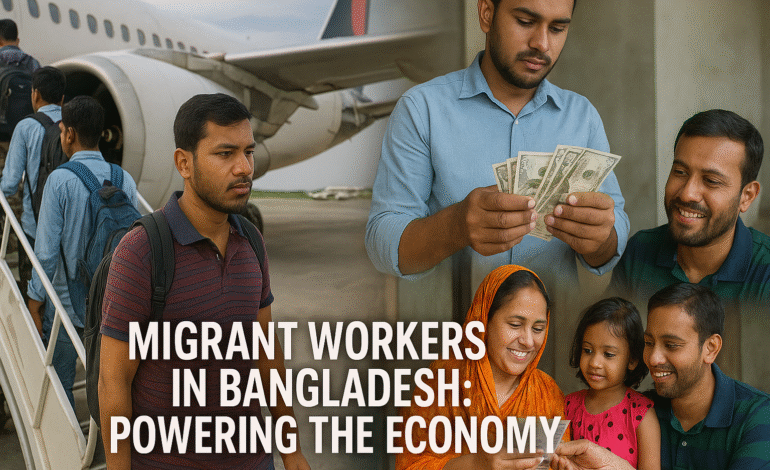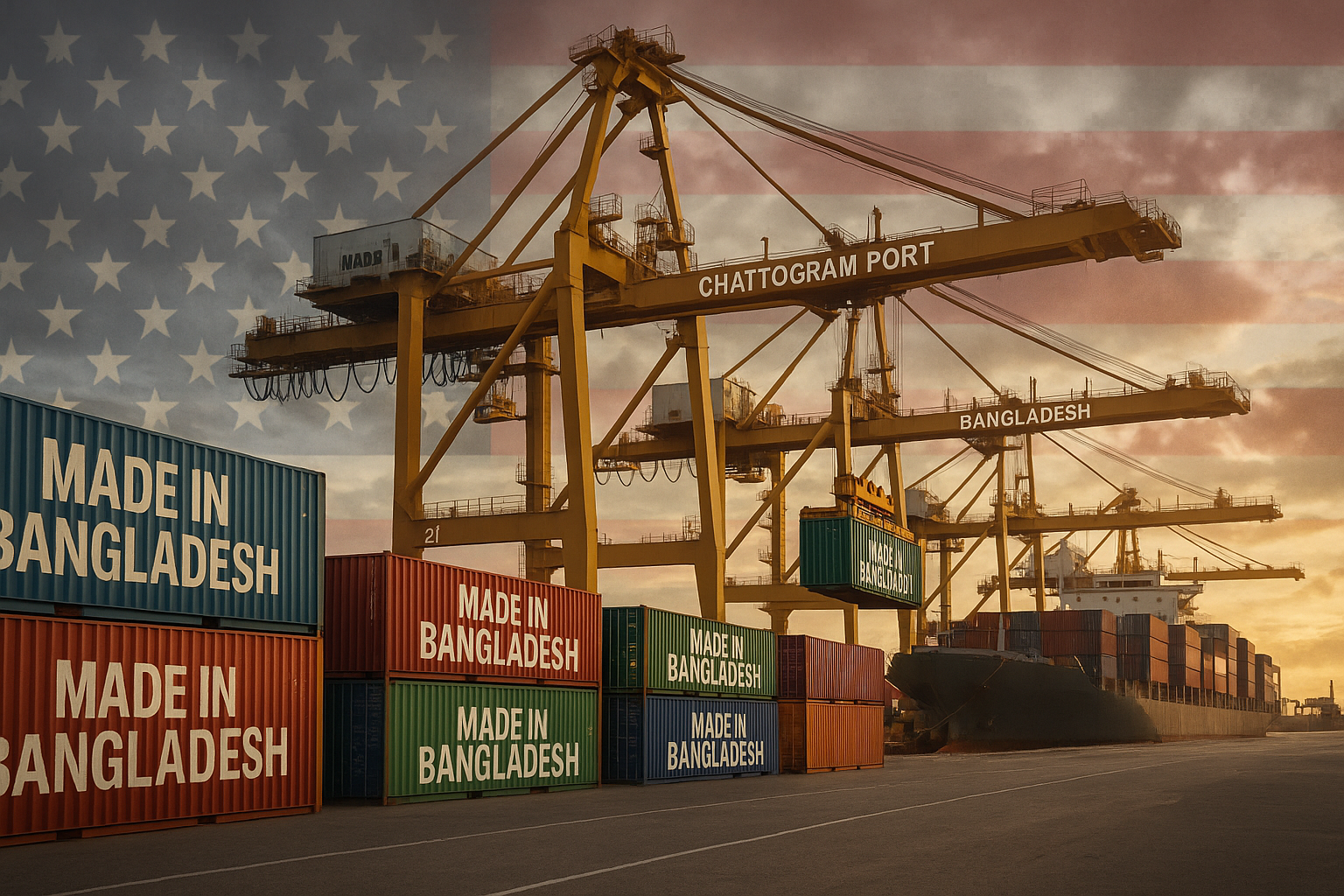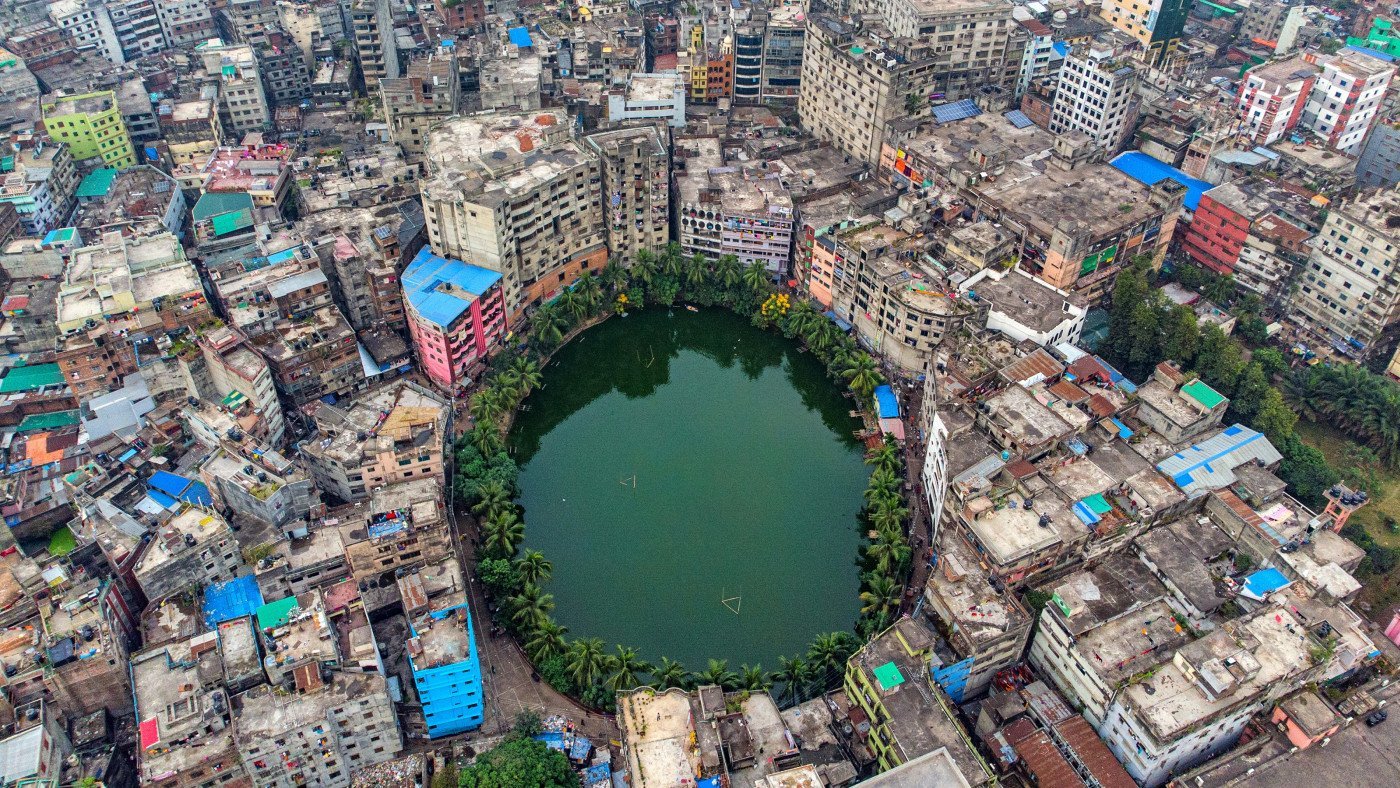
Migrant Workers in Bangladesh: Empowering the Economy
Migrant Workers in Bangladesh: The Power Behind the Economy
Migrant workers in Bangladesh are the lifeline of the nation’s economy. Every year, millions of Bangladeshis leave home to work in foreign countries, sending back billions in remittances. This money sustains families, supports education, boosts healthcare, and fuels economic growth. According to the World Bank, remittances contributed nearly 6 percent of Bangladesh’s GDP in 2023, making it the second-largest source of foreign income after garments. Bangladesh Bank also reports that remittances reached $21 billion in FY 2022–23, proving how critical migrant workers are to the economy.
The importance of this contribution is not just economic but also social. Families rely on remittances for survival, and the national economy depends on this steady inflow of foreign currency. World Bank migration data shows that countries like Bangladesh, India, and the Philippines consistently rank among the top remittance recipients worldwide.
The Scale of Migration
Bangladesh has a long history of labor migration. Since 1976, more than 13 million Bangladeshis have gone abroad to work. Each year, 600,000 to 700,000 new workers migrate, mostly to Gulf countries, Southeast Asia, and more recently, to Europe. In 2022 alone, a record over one million Bangladeshi workers went abroad, according to the Bureau of Manpower, Employment and Training (BMET).
This mass migration reflects both opportunity and necessity. Many workers seek higher wages abroad because domestic job opportunities are limited. Migration is not only a personal choice but also a survival strategy for millions of families.
Remittances: The Lifeline of the Economy
The flow of remittances directly impacts Bangladesh’s economy. In FY 2022–23, remittances totaled $21 billion, up from $18.2 billion in 2021. This steady income helps stabilize the nation’s foreign exchange reserves, which are essential for paying for imports such as fuel, food, and industrial machinery.
The International Monetary Fund highlights that remittances provide stability during economic shocks. During COVID-19, although migration slowed, remittances still remained resilient. This financial inflow became a buffer against economic downturns and rising poverty.
Top Destinations for Bangladeshi Workers
Bangladeshi workers migrate mainly to Gulf countries and Southeast Asia, but other destinations are also growing.
- Saudi Arabia: Around 22 percent of total remittances.
- United States: Roughly 20 percent, a growing source.
- United Arab Emirates: Contributes about 12 percent.
- Other countries include Kuwait, Oman, Malaysia, Italy, and the UK.
The diversification of migration destinations is helping reduce overdependence on the Middle East, although it remains the largest hub.
Social Impact of Remittances
Migrant workers in Bangladesh do more than send money; they transform lives. Families spend remittances on food, housing, education, and healthcare. According to the World Bank, remittances help reduce poverty in Bangladesh by 6 percent annually.
Education is one of the biggest beneficiaries. Children of migrant workers have higher school enrollment rates. Healthcare access also improves, as families can afford better treatment. Beyond basic needs, remittances also support small businesses, land purchases, and community development.
Challenges Faced by Migrant Workers
Despite their enormous contribution, migrant workers face serious challenges.
High migration costs: Workers often pay recruitment agencies high fees, leaving them in debt.
Exploitation abroad: Many workers report wage theft, unsafe working conditions, and lack of legal protections.
Human rights issues: Migrant workers in Gulf countries often experience restrictions on movement and limited access to justice.
Job insecurity: During global crises like COVID-19, thousands of workers lost jobs and returned home without compensation.
These challenges show that while workers are critical to the economy, they remain vulnerable.
Policy Gaps and Weak Enforcement
Bangladesh has migration laws and agreements, but weak enforcement reduces their effectiveness. Many recruitment agencies operate without strict oversight. Workers often sign contracts they do not understand, making them easy targets for exploitation.
Strengthening bilateral labor agreements with host countries can protect worker rights. Better pre-departure training and stricter monitoring of recruitment agencies are also necessary.
Future Opportunities for Bangladesh
Despite the challenges, the future holds great potential. Bangladesh can harness migration more effectively by focusing on new strategies.
- Skill Development: Most Bangladeshi workers are employed in low-skilled sectors like construction and domestic work. Expanding training in nursing, IT, and engineering can help workers access higher-paying jobs abroad.
- Diversification of Destinations: Bangladesh can expand migration to Europe, East Asia, and North America, reducing reliance on the Middle East. This will provide stability in case of regional crises.
- Encouraging Formal Banking Channels: Still, a large portion of remittances flows through informal networks like hundi. Promoting digital banking and mobile transfers will ensure higher official inflows.
- Eco-Friendly Migration Policies: Sustainable labor practices can help reduce exploitation. Partnerships with international organizations can ensure ethical recruitment and safe migration.
The Role of Global Partnerships
Bangladesh cannot solve migration challenges alone. Collaborations with ILO, World Bank, and host governments are crucial. International support can help in developing safe migration frameworks, improving worker training, and ensuring financial literacy.
For example, the International Labour Organization has already partnered with Bangladesh to promote decent work for migrant workers. Expanding these partnerships can make migration safer and more beneficial.
Migrant workers in Bangladesh are the silent heroes of the economy. Their remittances not only sustain families but also keep the national economy afloat. Contributing nearly 6 percent of GDP, they stabilize reserves, reduce poverty, and provide hope for millions.
Yet, their challenges cannot be ignored. Exploitation, debt, and job insecurity plague the lives of these workers. To truly honor their contribution, Bangladesh must strengthen policies, diversify opportunities, and protect workers abroad.
The future of Bangladesh’s economy depends on them. If managed wisely, migration can continue to be a cornerstone of prosperity for decades to come.







